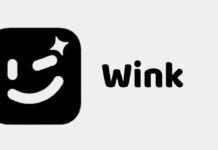When it comes to managing personal or business finances, having the right tools in place is crucial. Two popular options in the market are YNAB (You Need a Budget) and QuickBooks. While both offer financial management solutions, they cater to different needs and user preferences. In this article, we will compare YNAB and QuickBooks, examining their features, target audience, and suitability for different financial management scenarios.
YNAB: Empowering Individuals to Master Personal Budgeting YNAB, also known as You Need a Budget, is a web-based budgeting tool designed primarily for personal finance management. It provides users with a systematic approach to budgeting, helping them gain control over their finances and achieve their financial goals.
Features of YNAB:
- Rule-based budgeting: YNAB follows a “zero-sum” budgeting approach, where every dollar is allocated to a specific category or goal, ensuring maximum control and visibility over spending.
- Goal tracking: Users can set financial goals and track progress in real-time, helping them stay motivated and focused.
- Expense tracking: YNAB offers intuitive features for tracking expenses and categorizing transactions, making it easy to identify spending patterns and areas for improvement.
- Mobile apps: YNAB provides mobile apps for iOS and Android devices, enabling users to manage their budgets on the go.
- Educational resources: YNAB offers a rich set of educational resources, including video tutorials and live workshops, to help users improve their financial literacy.
QuickBooks: Comprehensive Financial Management for Businesses QuickBooks is a versatile accounting software package developed by Intuit, catering primarily to small and medium-sized businesses. It offers a wide range of features to streamline accounting processes, manage invoices, track expenses, and generate financial reports.
Features of QuickBooks:
- Bookkeeping and accounting: QuickBooks provides robust bookkeeping capabilities, including managing accounts payable and receivable, reconciling bank transactions, and generating financial statements.
- Invoicing and payments: Users can create professional invoices, track payments, and automate recurring billing processes, saving time and improving cash flow management.
- Expense tracking: QuickBooks allows users to track expenses and attach receipts, simplifying the process of organizing and categorizing transactions.
- Payroll management: With QuickBooks, businesses can handle payroll tasks efficiently, including calculating wages, managing employee profiles, and generating pay stubs.
- Integration capabilities: QuickBooks integrates with various third-party applications, such as CRM software and e-commerce platforms, enabling seamless data exchange and workflow automation.
Choosing the Right Financial Tool: When deciding between YNAB and QuickBooks, it’s important to consider your specific requirements:
- Personal finance management: If you’re an individual looking to gain control over your personal finances, YNAB’s focus on budgeting and goal tracking makes it an excellent choice.
- Small business accounting: For small business owners, QuickBooks provides comprehensive accounting functionalities, including invoicing, expense tracking, and payroll management.
- Scalability: QuickBooks offers more scalability, allowing businesses to handle increasing financial complexities as they grow.
- User interface: YNAB offers a user-friendly and intuitive interface, making it easy for individuals to get started with budgeting. QuickBooks has a steeper learning curve but provides a more extensive set of accounting features.
Conclusion:
Choosing between YNAB and QuickBooks depends on your financial management needs. YNAB is an excellent choice for individuals seeking better control over personal finances, while QuickBooks is a comprehensive solution for small and medium-sized businesses with accounting requirements. Carefully evaluate your specific needs, consider the features and scalability of each platform, and select the one that aligns.





